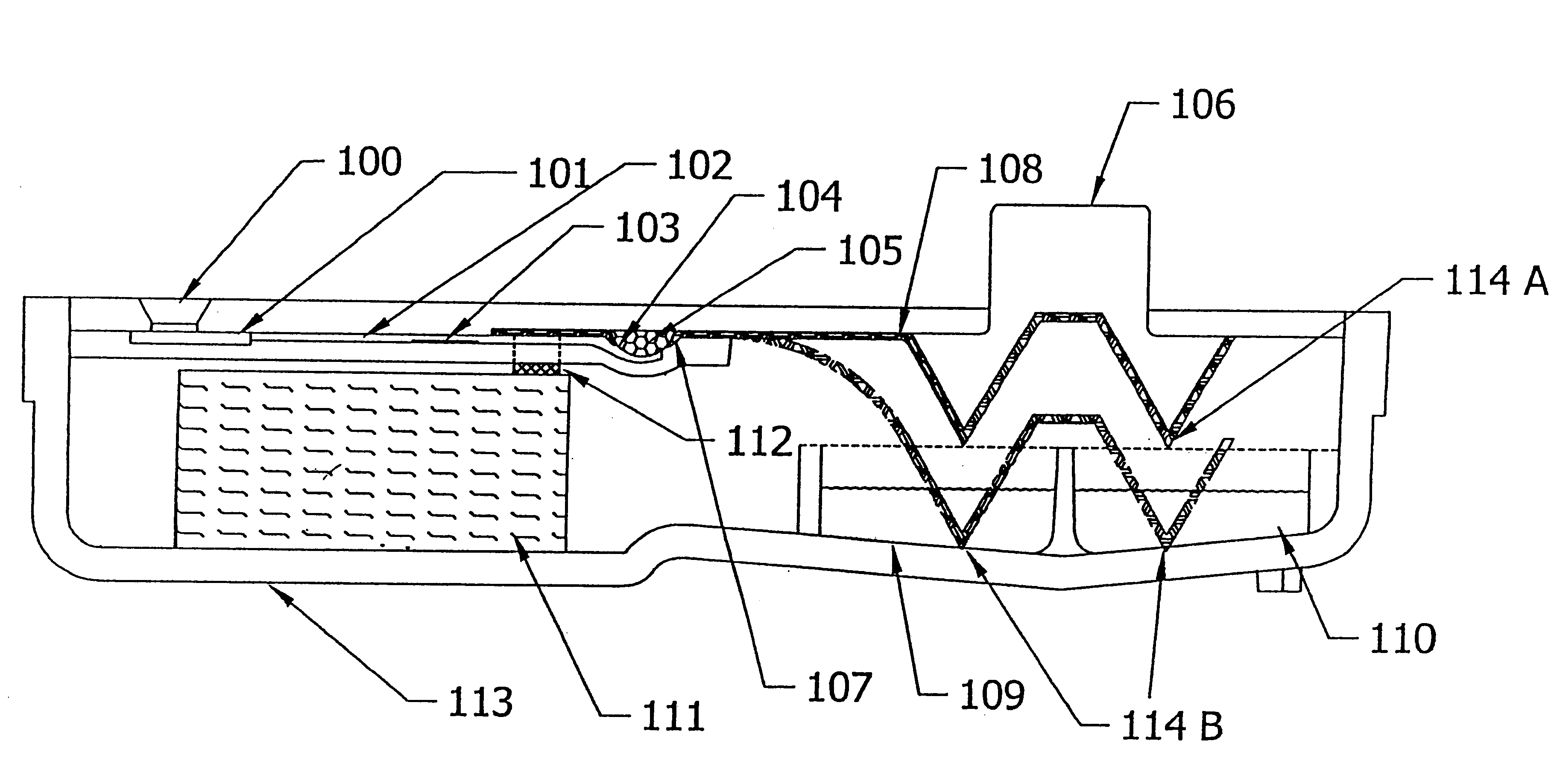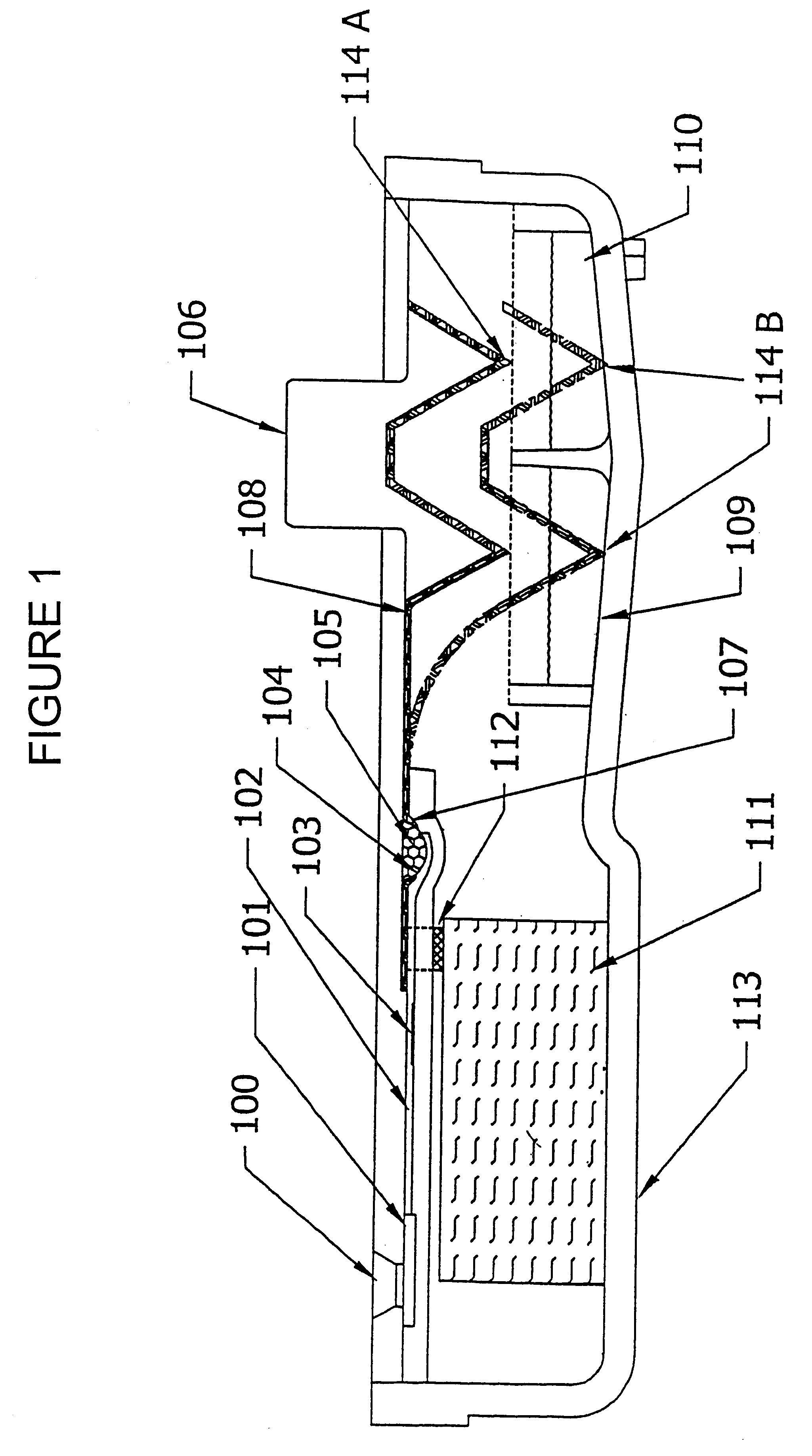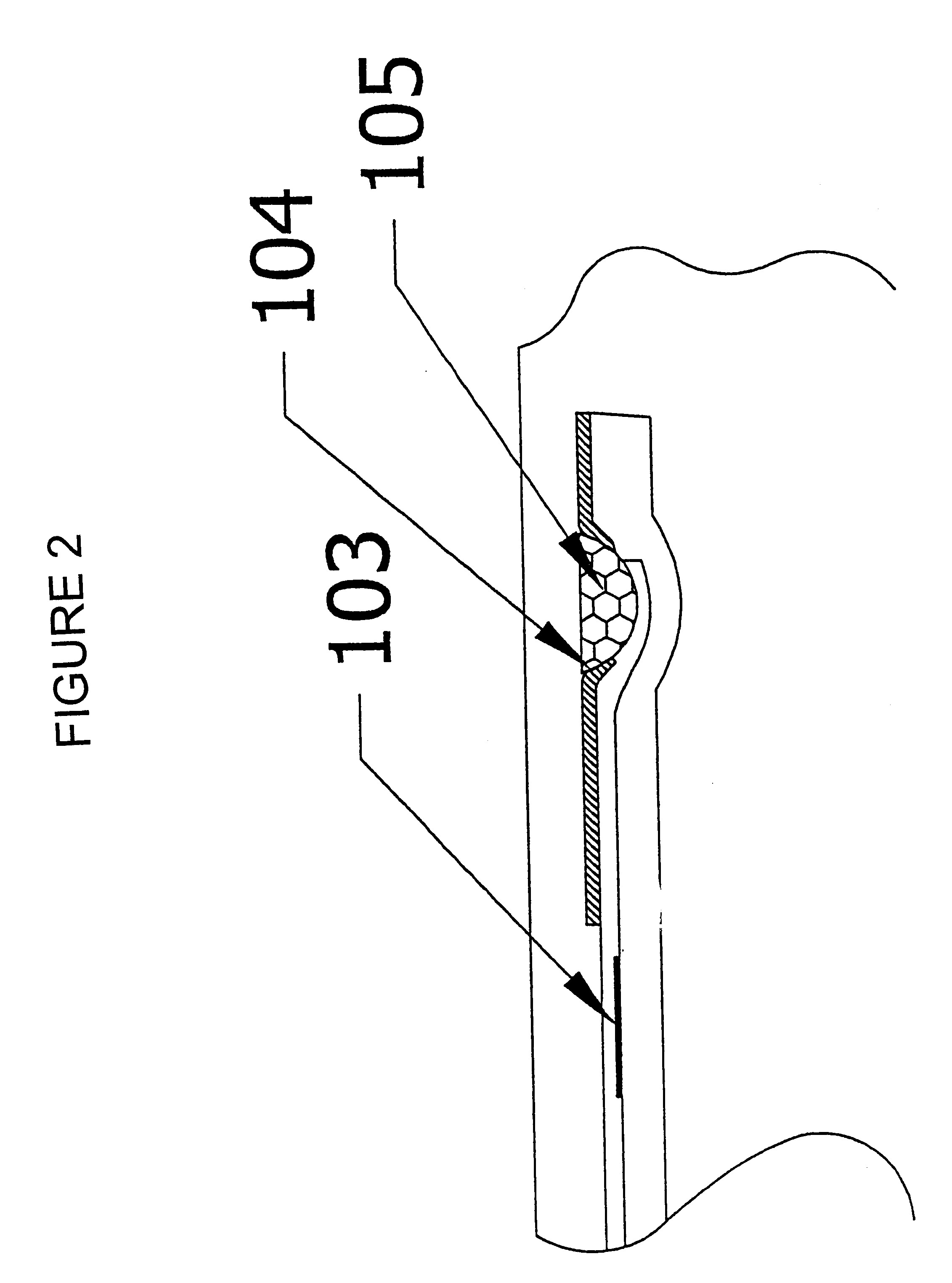Device and method for integrated diagnostics with multiple independent flow paths
- Summary
- Abstract
- Description
- Claims
- Application Information
AI Technical Summary
Benefits of technology
Problems solved by technology
Method used
Image
Examples
example 1
This example relates to the present methods and devices for the detection of canine heartworm antigen in a sample.
Preparation of anti-heartworn-enzyme conjugate: Horseradish peroxidase (HRP) (20 mg) was oxidized with a 100-fold molar equivalent of sodium periodate at pH 4.5, then mixed with 1.25 equivalent amount by weight of affinity-purified chicken-anti-heartworm antibody. After 1.5 hours of reaction, the HRP-antibody conjugate was stabilized by reduction with a 100-fold molar equivalent of sodium borohydride, incubated for a further 0.5 hours. Conjugate was stored at 1 mg / ml protein concentration in conjugate diluent. This HRP-antibody conjugate is one of the conjugate soluble binding reagents that will be dried in the sample delivery channel of the device prior to use.
Preparation of biotinylated anti-heartworm antibody: Affinity-purified rabbit-anti-heartworm antibody (20 mg) was reacted at alkaline pH with 15 molar equivalents of biotin-amidocaproyl-NHS ester. Unreacted biotin...
example 2
The device of example 1 can be simplified by use of a fluorescent label or colored particle e.g. colloidal gold, attached to the chicken anti-heartworm antibody instead of using HRP as the conjugate. In this case, the substrate reagent can be omitted, and the signal is viewed after the unbound reagent is washed away.
example 3
To detect multiple analytes in a single sample, a multi-channel device is constructed from the device in example 1 by feeding multiple sample delivery channels from a single sample entry port (FIG. 7). Each sample delivery channel will contain different conjugate binding reagents to detect the different analytes. Thus, four solid-phase containers are constructed to be adjacent to each other. The assembly is attached to a plastic part with four sample delivery channels.
PUM
| Property | Measurement | Unit |
|---|---|---|
| Time | aaaaa | aaaaa |
| Capillary wave | aaaaa | aaaaa |
| Flow rate | aaaaa | aaaaa |
Abstract
Description
Claims
Application Information
 Login to View More
Login to View More - R&D
- Intellectual Property
- Life Sciences
- Materials
- Tech Scout
- Unparalleled Data Quality
- Higher Quality Content
- 60% Fewer Hallucinations
Browse by: Latest US Patents, China's latest patents, Technical Efficacy Thesaurus, Application Domain, Technology Topic, Popular Technical Reports.
© 2025 PatSnap. All rights reserved.Legal|Privacy policy|Modern Slavery Act Transparency Statement|Sitemap|About US| Contact US: help@patsnap.com



